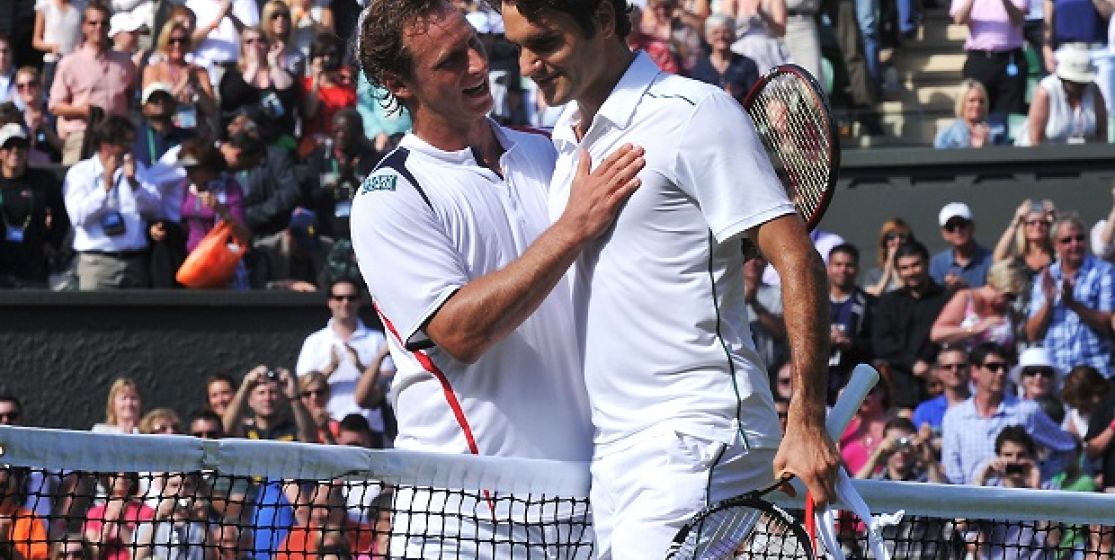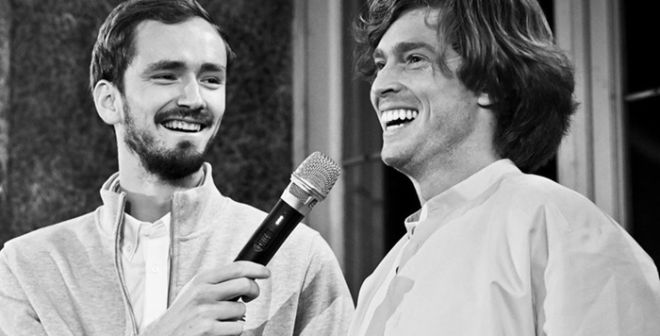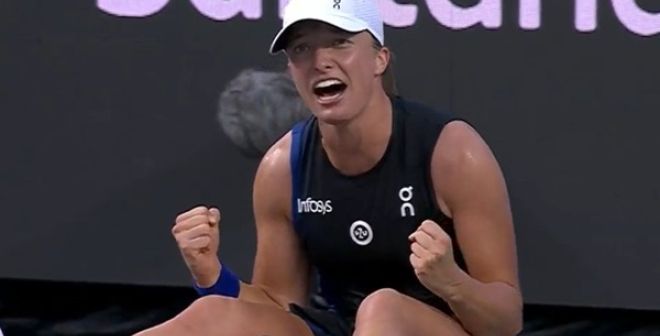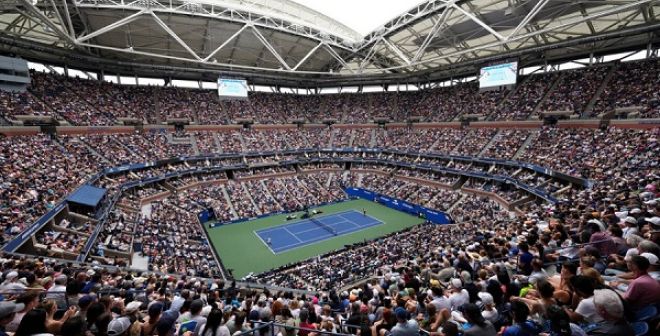David Nalbandian has long been Roger Federer one's when Stanislas Wawrinka was Nalbandian's. This, is the “Nemesis”. All tennis players are aware of it, but (almost) all of them keep denying its existence in their head. So what is this strange animal that disrupts hierarchies and turns players into crazy punters?
First, let’s define the Nemesis: the notion of "bugbear" means that in a list of face-to-face between two players, the one who wins the most often is almost always the lowest ranked of the two. Thus, the 14, 15 and 16 defeats inflicted respectively by Roger Federer to David Ferrer, Mikhail Youzhny and Robin Soderling don't make of him the Nemesis of the latters. It's just that in terms of rankings, as well as prize list, he's just much better than these three very good professionals. However, when the Swiss outperforms another world No.1, Andy Roddick, with a stinging 21-3, then you can evoke the Nemesis. Now let's dissect the creature in question.
1/ The Nemesis, it’s in the game
At the origin of every unbalanced or surprising track record with respect to the status of two opponents, there’s always a specific technique used as itching powder to create a problem to the other player. Gifted with an exceptional eye, David Nalbandian has thus never really been bothered by Roger Federer's service, yet regarded as one of the most "unreadable" in modern history. This is largely what allowed the Argentine to the be ahead of the Swiss for a long time (he led up to 6-3). It’s from this observation that Fabrice Santoro - whose relationship with the Russian Marat Safin poses the most famous case of "Nemesis" of the ATP Tour - develops his analysis. The French man explains: "First, I could read his service quite well, so I was taking away a weapon which was usually crucial to him. Then, I was solid during exchanges in diagonal backhand, my strong point. He was stuck with his forehand... So I was able to take him with my slice forehand, preventing it from relying on the ball to accelerate. I was disrupting his plans.» If style oppositions sometimes cause surprising results, the same is true for two tennis players with similar games... when one of them is just a bit better than his opponent on that particular day. Great server with a strong forehand, Jo-Wilfried Tsonga found a great opponent in the person of Robin Soderling: with an equivalent track record, the French yet totals five defeats in as many matches against the Swede. And a single set won. Back in the days, Richard Krajicek was the only one able to create such enormous problems to Pete Sampras: at least as good as him for the serve-and-volley, the Dutchman, before experiencing numerous injuries, was also extremely solid from the baseline. Having for a while led 6 successes to 2 (6-4 in the final), the winner of Wimbledon remains the only tennis player with a significantly positive "track record" against Sampras.
2/ The Nemesis, it's in the playing conditions
So there are the differences and similarity in the games, but there are also the external factors. These can sometimes give the impression that a player just cannot compete against someone in particular. It’s the case of Lleyton Hewitt, who became in 2003 the first defending Wimbledon champion eliminated in the first round in the Open era. It seems that he just couldn’t beat Ivo Karlovic. Unconventional returner, the powerful Service of the Croat him was causing insurmountable hassle. And as if that wasn’t enough, luck had four of their five matches taking place on fast surfaces, the Australian having only one match on a slow surface (at Roland Garros) to try to reduce the magnitude of the disaster (4-1 for Karlovic). The same goes for Sebastien Grosjean, laminated by Andy Roddick on a regular basis without many occasions to play on clay against the American (8-1 for "A-Rod": 8 on grass or hard courts against 1 on clay courts) or Gilles Simon and Michael Llodra. The two French crossed paths five times, on-going series: four times indoor and once on grass, so the best surfaces for the Parisian. "Michael is really the archetype of the “Nemesis player” against whom everything is complicated. And they always meet on the 'wrong' surface, says Thierry Tulasne, coach of the Nice based player for a while. Basically, 'Mika' is already causing him problems by refusing long rallies, which traditionally allow Gilles to play at his best. Serve-and-volley, return... This kind of game has everything to frustrate Gilles. So when you add to that the fact that they have always met on surfaces perfectly suitable to Llodra's attacking game, it becomes extremely difficult to escape the trap." Last and not the least: the always hot topic that is the rivalry between Federer and Nadal. It should be noted that if the balance shifts to two-thirds in favour of the Iberian (21-10) - justifying in itself to consider the current World No. 1 as the Nemesis of his elder who occupied the throne for over 300 weeks – it’s essentially on clay that the animal made its hole: 13-2 on ochre courts, against 7-6 on hard courts and 1-2 on grass courts.
3/ The Nemesis, it’s in the head
After a number of defeats combining the above factors, the little beast has made its nest. It has settled in the head, you can’t think about anything else when comes the time to meet its usual executioner. "Marat said quite early, perhaps even from our first game, that he couldn’t play against me," says Fabrice Santoro. In a sport of "one against one" with repetitive patterns like in tennis, it’s hard to get out once trapped in the eye of the storm. When dark thoughts sneak inside the head, you then have to face two opponents on the court, making the challenge even harder. Richard Gasquet might be in the process to achieve this, after two consecutive victories in recent weeks against David Ferrer, him who had previously lost eight out of nine matches against the Spaniard: "Of course you think about the previous matches, he says. David has hurt me more than once in the past, it's hard to ignore it when I have to face him." The hope of salvation, the reason to believe again, he found it elsewhere, in a Olympic match in doubles last year, with a real alchemy between Julien Benneteau and him: "Even if it were two, beating David in the semi-finals at the London Olympics has been great for me." In tennis, one of the rare sports where you’re alone on the court (except the doubles then), everything matters when it comes to re-inflate the confidence gauge and chase bad memories. But unless external factors - favourable surface, injury or opponent getting older - it's terribly difficult to reverse the momentum.
4/ A Nemesis, you can fight it
So precisely: whar if you could recognize a true champion by his ability to reverse the trend against his Nemesis? During the first third of their careers, the two leading players of the 2000s, Roger Federer and Rafael Nadal, had at least as many Nemesis than weaknesses in their tennis. Thanks to a great work on the control of his nerves, but also improvements of his moves and backhand, the Swiss has gradually taken over Tim Henman, Lleyton Hewitt and David Nalbandian, reversing completely - and spectacularly, Hewitt, gone from 7-2 to 7-17, knows it just too well! - the face-to-face results curve. Same goes for Rafael Nadal, undermined by players combining aggressive tennis and sharp backhands, like James Blake, Tomas Berdych or Mikhail Youzhny: by working on his backhand and leaving his defensive game in the dressing rooms - along with his capri pants - the Majorcan has made so much progress that they all had to bend in front of him, leaving Nikolay Davydenko as the only one still wearing a very fragile label of “Nemesis” on his racquet. Because there’s no secret: to hunt the animal once it has made its nest in your mind, you must love a good challenge, the prospect of having to fight to disrupt a preordained scenario. As the old lion Jimmy Connors after a debacle in the Wimbledon final against Bjorn Borg who roared: “I’ll chase that son of a bitch Borg to the ends of the earth. I’ll be waiting for him. I’ll dog him everywhere. Every time he looks around he’ll see my shadow.”






